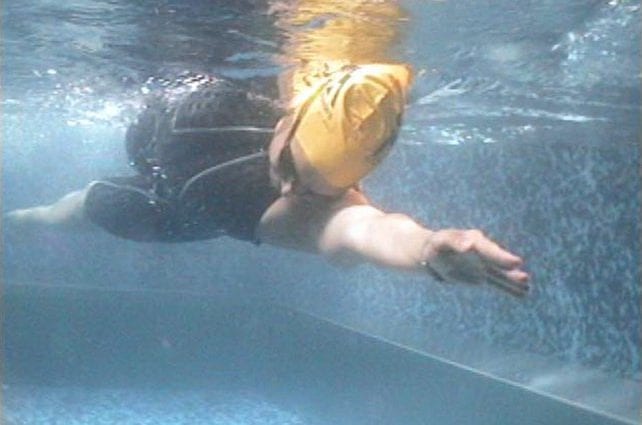Contents
- Muscle group: Shoulders, Triceps, latissimus dorsi
- Type of exercises: Basic
- Additional muscles: Hips, Quads, Buttocks
- Type of exercise: Cardio
- Equipment: None
- Level of difficulty: Beginner
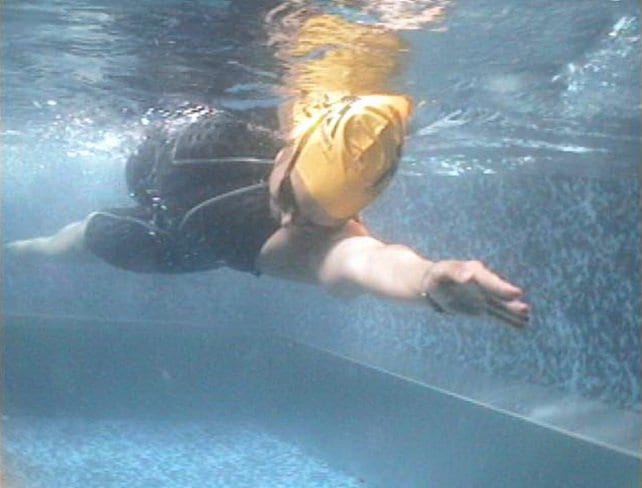
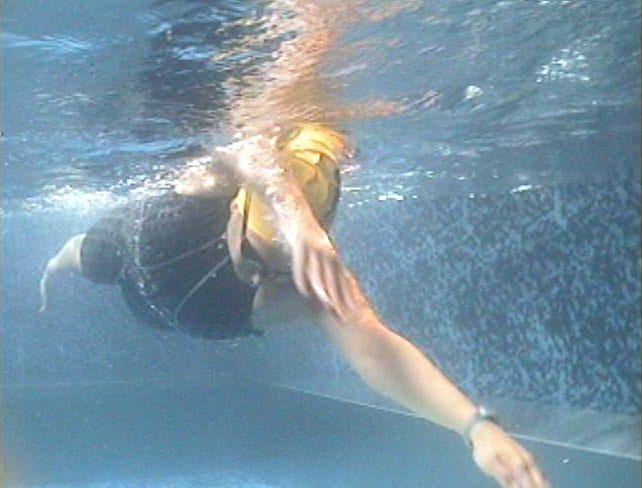
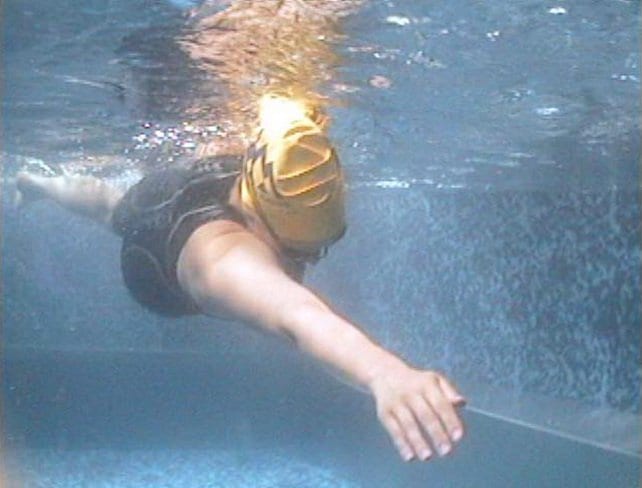
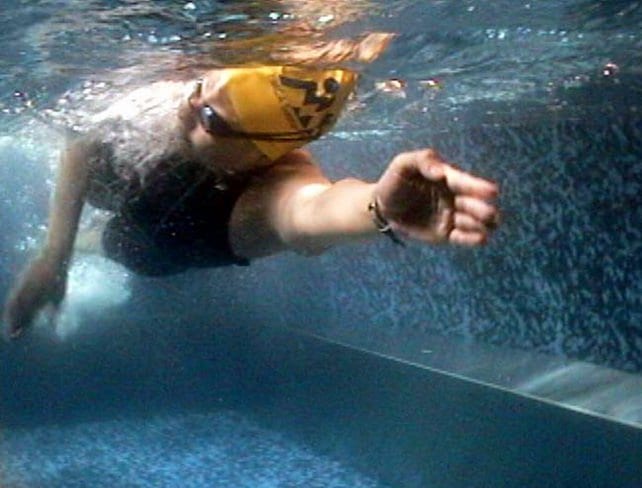
Front crawl (free style) — technique exercises:
Learning to swim is based on multiple repetitions of specific movements that hone the technique of strokes to perfection. They are included in almost all training facilities and any coach will tell you that exercise technique is never too much. Therefore you should include a couple in your exercise program.
The key to success when mastering freestyle: most of the time you spend on the side and twist, and not on the stomach! Real rabbit requires constant turning and rotation of the body around its longitudinal axis. Also, you should develop a breathing rhythm that will contribute to the effective rotation.
In the following guide, “front” refers to the hand that “points” the direction of motion. The eponymous side (shoulder to hip) is generally drawn to the bottom of the pool, like the keel of a boat. The opposite side (shoulder to hip) is directed to the ceiling (or sky, if you happen to swim in natural water) like a shark fin.
Sitting on a bench or chair
Extend one arm and grab an imaginary rail, pull it forward. After completing the pulling, stretch forth your other hand and grab the second “rail”. Repeat the exercise several times, as if you need to catch up on the hands between the two rails. Stand up from the bench and repeat the exercise standing… pull the arm, pull up, pull hand tightened.
Notice how much more relaxed, cleaner and more powerful than steel movement after you have connected the hip area. Now you catch up not only on the hands. All the muscle groups involved – muscles of the pelvis, back and anterior abdominal wall. Note that the range of motion is also increased – you can now reach out further and deeper to catch up. This we try to achieve in a freestyle: a natural and relaxed power.
Catch-up
Exercise helps to focus the movement with one hand and to develop a long stroke with a stretched string in the case. You swim regular freestyle, but with one amendment: one hand is motionless, extended forward (front arm) and indicates the destination and the other performs the stroke (working arm). When the hand is drawn forward and overtakes the front, the hands switch roles.
Catch-up for three quarters
The usual catch-up, but with a slight difference: the front hand comes into operation shortly before her “catch up” working hand – movement begins at the moment when the hand exceeds three quarters of a full cycle.
Catch-up with the Board
And it is again a catch-up, but this time the front hand is held over the Board for swimming; changing roles of the hand pass Board like a baton. You can even replace the Board with a pencil or any other object that won’t weigh you down.
Drawing fingers
The exercise teaches you to keep the elbows high and control the hand position in phase for the return. Swim freestyle but do not remove fingers from the water in the return phase. Fingers glide on a small distance from the body, and you focus all the attention on the proper rotation of the body and high elbows are pointing up. Vary the degree of immersion of the hand in the water: the fingers, hand, wrist and forearm.
10/10 (simplified version)
Develops skills rotation body and the ability to keep correct head position (especially when you next exercise, you will add breath). Outwardly, everything looks like regular freestyle in slow motion. One arm extended forward and indicates the direction of movement (front hand), the second looks back, pointing to the place where you were a second ago. The hands in this exercise, unlike of body, rest. The trunk should be located as follows: the party of the same name back, looks up, and the opposite side is directed to the bottom of the pool.
The ear is on the shoulder of the front arm, chin in line with chest, eyes looking to the side (and slightly up) and your mouth is above water (so you can breathe). Do ten kicks and then turn around and change hands in places.
Front hand under the water makes rowing movement and ends it at the bottom, turning into the back. The second hand sweeps over the water in the phase of the return and automatically becomes the front. At the same time turning the head, turning it together with the case: the rotation is directed down through the water with the subsequent exit to the surface on the opposite side. Do another 10 strokes and again completely change the situation. When you master this exercise, climb on the top step, and add the breath (see the following exercise).
10/10 (add breathing)
Repeats the previous exercise with the only difference that we are changing the position of the head, which now occupies the position, the standard for freestyle. Your sight is directed in the direction of motion! Turn the head so that cheek was located over the anterior shoulder arms, gaze directed slightly downwards relative to the forward and thereof.
To breathe, you will have to turn his head, and then return to the starting position, looking forward on an outstretched hand. The breath should occur on the side of the hand which is in a phase of return (moves forward) at the moment when the hand is immersed in water; this is followed by the rotation of the body and head rushes after him.
Having mastered the exercise, gradually reduce the number of kicks for each cycle, until you go from slow motion (10/10) to the standard rhythm of leg movements in the crawl (3/3 or Chistiakova footwork).
Fists
Exercise gives you the “feeling” of water. Traditional swim freestyle, but the brush one or both hands clenched in a fist. Vary the structure and number of strokes “fists”. Later, having unclenched hands, you’ll be able to feel the difference in the pressure that they exert on the water – use this feeling to retain the water in the pull phase.
And when his hands clenched into fists, try to push the water through the inner (Palmar) surface of the forearm – the lower part of the arm, from the wrist to the elbow – like it is an extension of your hand. And don’t forget to rotate the body!
One-armed
At this point, all attention working hand. Traditional swim freestyle, but rowing with one hand. The second stationary extended forward (front hand) or backwards along the trunk (the back hand).
The active hand is doing a series of hoe-type motions; before you swap places, each hand performs a certain number of pull-UPS. Do this exercise with a passive hand in both positions. When the stationary arm is extended at your sides, inhale on the same side (opposite handedness). If the stationary hand is stretched forward, breathing on the side of the working hand. Again, choose a time to breath accordingly, the rotation of the body. To inhale the head rotates simultaneously with the housing, and then returns to centered position.
The bumps on the side
Swing Board to swim and learn how to do beats on the side. Pull the lower arm forward, press the top to the body. Overcome the distance by shock stop, on the way back, roll over on the other side.
Perhaps you will feel that on one side you sail is easier than on the other. Why? If you used to breathe on one side, your difficulties may be associated with the respiratory cycle (you go to the bottom every time you exhale), or they are caused by the rotation of the hips (legs “tangled” and you can’t keep a balance).
Impact on the six
In position on side kicking legs, count to six, and then make one stroke, changed hands, spinning on the opposite side, and pull forward the other hand. Again count to six, do stroke and turn. Make sure that the pelvic part is not “bogged down” in the process of rotation. Rotation should be smooth, but quick as a click.
One-armed crawl
Again the first strike, running on the side, as in the previous exercise. But now the directional – sliding — arm we leave ahead. Second-hand – rowing – move forward and move under the body to complete the stroke.
Use the large muscles of the hip region, back and side of the torso to complete the stroke, which we are completing on the same side where you started, with back of hand pressed to thigh. Remember that moving the arm all the time extended forward. (For comparison, try this exercise, taking a horizontal position. Feel how complicated the task of the working hand, which now makes the stroke only at the expense of the muscles of the shoulder girdle, shoulder and forearm. Feel the power and energy generated by the rotation of the body!)
Three times three
Do three strokes with one hand and then three to the other. Changing hands, sharply move the body and hips in the relevant position.
Skater
When you swim freestyle, one hand usually enters the water for a moment before the second will complete the stroke. This is called a chiasm. The following exercise is different from the traditional crawl only by the absence (or very short duration) this chiasm. After the hand touched the water, give forward and make a little slide before you move on to the grip and pulling up.
But don’t stay as if you were doing the “kick six”; continue to perform continuous hand movements. Just slightly increase the duration of the phase slip at the moment of hand entry into the water. Imagine a skater that pushes off the ice and slides forward on one foot.
The acceleration of this slide attaches to the back leg of the skater, which rests on the ice, and then pushed away. Imagine the same movement during the voyage. Use the end of each stroke to propel your body for the subsequent slides.
First you will be difficult to make a focused and powerful movement with one hand at the moment when the second straightened and relaxed, but this is one of the secrets of fast and efficient freestyle.
Use all the power at the right moment, and then relax. Make sure your pelvis and your shoulders rotate accordingly rowing cycle, and the strokes involve large muscles of the back. Exercise “skater” great help in moments of fatigue, the loss of rhythm in the process of grueling workouts or during long swims. Move forward. Slide. Revolve. Discard the water from the swim leg and from the hip.
There are many options for completing these exercises and more exercises, which we did not have time to tell. You can combine them in one fell swoop in order to work out a few techniques and can add more specialized to hone individual item of equipment. Experiment, modify the exercises and try to constantly improve their technique. And good luck!
- Muscle group: Shoulders, Triceps, latissimus dorsi
- Type of exercises: Basic
- Additional muscles: Hips, Quads, Buttocks
- Type of exercise: Cardio
- Equipment: None
- Level of difficulty: Beginner










